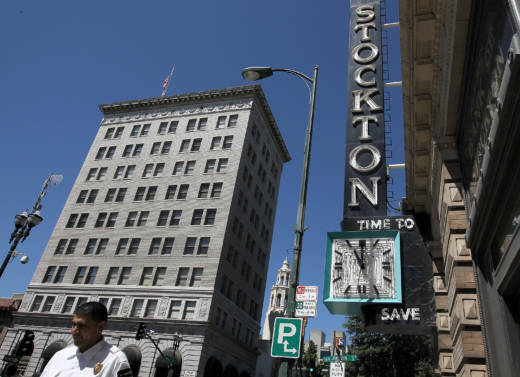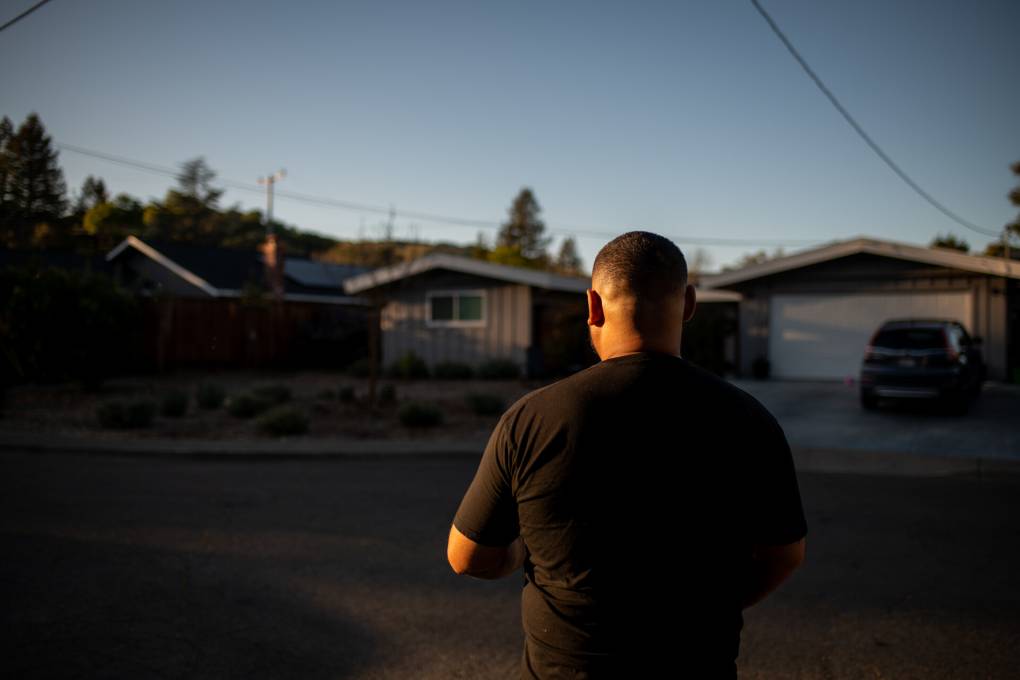The money has made Jovan Bravo happier. The 31-year-old Stockton native and construction worker is married and has three children, ages 13, 8 and 4. He said he didn’t see enough of his children when he worked six days a week to pay the bills.
That changed when he started getting $500 a month. Now he only works one Saturday a month. He uses the other Saturdays to take his kids to the amusement park and ride bikes with them in the park.
“It’s made a huge difference,” he said. “Just being able to spend more time with the wife and kids, it brings us closer together.”
Stockton officials do not release the names of the program participants. They arrange interviews with journalists only for those who volunteer to discuss their experiences.
The idea of a guaranteed income dates back to at least the 18th century and has crossed ideological and cultural lines.
In the 1960s and 1970s, Republicans Donald Rumsfeld and Dick Cheney oversaw four guaranteed-income experiments scattered across the country when Rumsfeld, later a defense secretary, was director of President Richard Nixon’s Office of Economic Opportunity and Cheney, the future vice president, was his deputy.
The program had some hiccups, including a woman who spent all the money on alcohol and a man who went into debt buying expensive furniture for his government-subsidized apartment, according to a 1970 New York Times story. But the experiment concluded that the money did not stop people from working and led Nixon to propose expanding the program, which ultimately did not pass Congress.
Since then, other studies have reached similar results. A 2018 study in Alaska, where residents have gotten a share of the state’s oil revenue every year since 1982, found the money has not shrunk the state’s labor force. The same was found in a 2010 UCLA study in North Carolina, where the Eastern Band of Cherokee Indians has shared casino revenue with its members since the mid-1990s.
The latest momentum comes with the help of the technology industry, which is grappling with how to prepare for the job losses likely to come with automation and artificial intelligence.
The tech connection has drawn criticism from left-leaning labor unions skeptical of the industry’s motives.
“We think the future of work should be defined by working people, not tech billionaires,” said Steve Smith, spokesman for the California Labor Federation, a group of 1,200 unions and a reliable ally for some of the state’s most liberal policies. “If there are no jobs available, you are pretty much stuck with your $1,000 a month check while the CEO of the tech company that automated you out of a job is being paid a billion dollars a year.”
Other critics note that the programs can chip away at the social safety net. Yang’s plan requires recipients to decline food stamps and some other government assistance.
There’s also the question of how to pay for it.
Stockton’s program, giving 125 people $500 per month for 18 months, will cost just over $1.1 million. Harris’ plan, which covers working families making up to $100,000 annually, would cost about $275 billion per year, according to the Tax Policy Center. To pay for it, she says she would repeal some of the 2017 GOP tax cuts and impose new taxes on corporations.
Yang’s plan, which covers every adult in the United States, would cost $2.8 trillion per year. He would impose a new tax on businesses’ goods and services while shrinking some other government assistance programs. Representatives for Yang and Harris did not respond to interview requests.
The Stockton experiment runs through July 2020. Researchers expect to release their first round of data this fall, when the presidential campaigns are preparing for the Iowa caucuses and state primaries.
Tubbs says he already sees success in making the city a focal point in the discussion about the future of capitalism and the U.S. economy. But once the experiment is over, he’s not sure what’s next. He says guaranteed income would need to be much bigger — at least statewide — to really have an impact.
Garza does not know what’s next for her either. She relies on her husband for most things, and he recently lost his job. The extra $500 a month was so helpful, it left her wondering how she was lucky enough to get it — a question she posed to the program’s director.
“She goes, ‘Because you’re blessed,’ ” Garza said. “And I just left it at that.”



